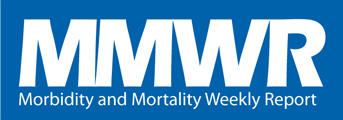MMWR News Synopsis for September 8, 2016
- Evaluating Communication Strategies and Household Impact during Microcystin Toxin Contamination in a Municipal Water Supply — Lucas County, Ohio, September 2014
- Baylisascaris procyonis, Raccoon Roundworm, Central Nervous System and Ocular Disease — United States, 2013 – 2015
- Cessation of Use of Trivalent Oral Polio Vaccine and Introduction of Inactivated Polio Vaccine — Worldwide, 2016
Evaluating Communication Strategies and Household Impact during Microcystin Toxin Contamination in a Municipal Water Supply — Lucas County, Ohio, September 2014
CDC Media Relations
404-639-3286
Governmental agencies and community partners need to engage in joint prevention and response efforts. When a community is exposed to microcystin and a do-not-drink advisory is issued, public health partnerships need to mobilize to provide timely communication, alternative water sources, and physical and mental health resources. Cyanobacteria can cause harmful algal blooms when wind and water currents facilitate their development or nutrient (e.g., phosphorus, nitrogen) runoff accumulates. Harmful algal blooms can produce toxic chemicals, including microcystin, which can potentially affect the health of people and animals when they have contact with contaminated water. Microcystin contaminated a municipal water supply and a do-not-drink advisory was issued in Lucas County, OH. Residents self-reported physical and mental health symptoms, primarily gastrointestinal symptoms, anxiety, and stress. Households also reported school and work closures, interrupted medical care, financial burden, and use of alternative water sources after the advisory was lifted.
Baylisascaris procyonis, Raccoon Roundworm, Central Nervous System and Ocular Disease — United States, 2013 – 2015
CDC Media Relations
404-639-3286
Ingestion of infected raccoon feces lead to severe disease. Prompt medical attention should be sought if any history of possible ingestion or exposure to raccoon feces is suspected, especially in children. Baylisascaris procyonis is a roundworm commonly found in raccoons. It can be found anywhere in the United States where raccoons live. People, especially children, are most commonly infected by this roundworm when they accidentally ingest contaminated raccoon feces. Infection with Baylisascaris procyonis can have severe outcomes, such as blindness and even death if not treated promptly. It is important to seek medical attention if ingestion of raccoon feces is suspected. Raccoon roundworm infection can be prevented by frequent handwashing after working outdoors where raccoons are found, and watching children so they don’t place objects in their mouths. Raccoons tend to defecate in fixed locations called latrines; it is important to safely clear raccoon latrines in and around properties.
Cessation of Use of Trivalent Oral Polio Vaccine and Introduction of Inactivated Polio Vaccine — Worldwide, 2016
CDC Media Relations
404-639-3286
Although vigilance for and strong responses to remaining polioviruses are still needed, the synchronized global cessation of tOPV use involved extensive efforts to reduce risks from vaccine-derived polioviruses and is a major milestone in efforts to create a polio-free world. In an unprecedented feat of coordination and synchronization, all countries using oral polio vaccines (OPV) have stopped using trivalent OPV (tOPV), which contains weakened types 1, 2, and 3 polioviruses. All 155 countries and territories using OPV in 2015 reported that they had stopped use of tOPV by May 12, 2016; 150 switched to bivalent OPV (bOPV), which contains only types 1 and 3 polioviruses. Use of tOPV was stopped to prevent future type 2 vaccine-derived polioviruses. More than 140 polio vaccination campaigns were held, more than 160,000 vaccine stores and health facilities were checked for remaining tOPV, and 105 countries started use of inactivated polio vaccine to minimize the risk from type 2 vaccine-derived polioviruses after tOPV use ceased. The global polio surveillance system has detected a few type 2 vaccine-derived polioviruses since the switch, triggering vaccination campaigns with stockpiled polio vaccine. So far the experience with cessation of tOPV use shows that bOPV can be successfully withdrawn in a coordinated manner after type 1 wild poliovirus is eradicated to eliminate all risks from vaccine-derived polioviruses.
Notes from the Field
- Varicella Outbreak Associated with Riding on a School Bus — Muskegon County, Michigan, 2015
QuickStats:
- Percentage of Residential Care Communities and Adult Day Services Centers that Provide Selected Services — United States, 2014
###

